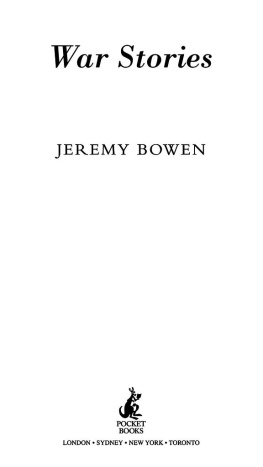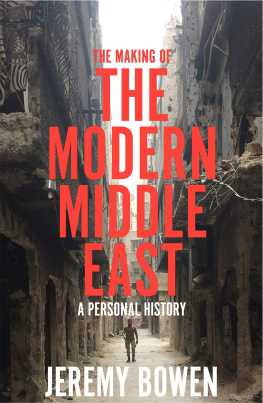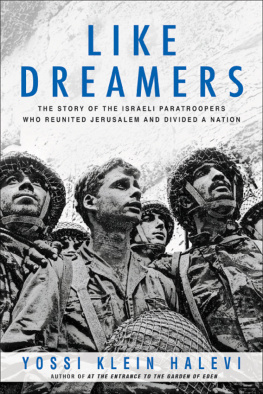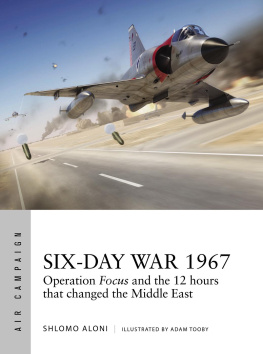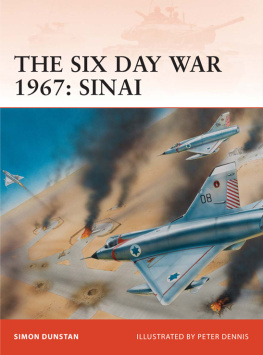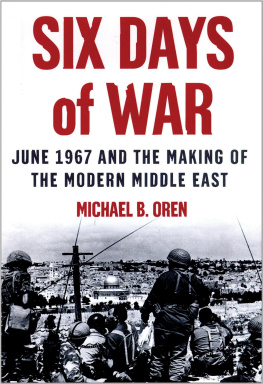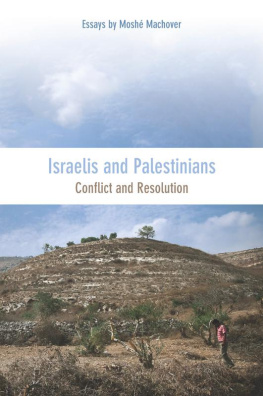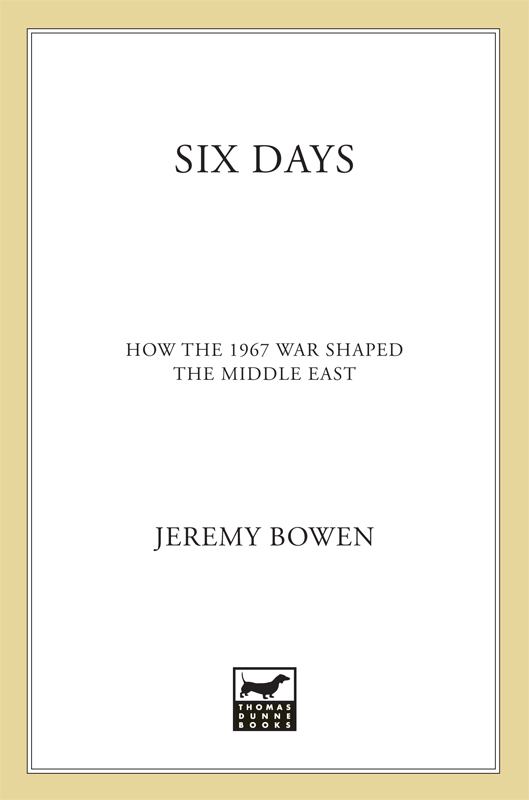
The author and publisher have provided this e-book to you for your personal use only. You may not make this e-book publicly available in any way. Copyright infringement is against the law. If you believe the copy of this e-book you are reading infringes on the authors copyright, please notify the publisher at: us.macmillanusa.com/piracy.
Contents
For Julia, Mattie and Jack and my parents.
Euphoria after victory is dangerous.
But whats even worse is arrogance.
You stop thinking and learning.
Uri Gil, fighter pilot, Israeli
I want peace but how can I teach my children to extend their hands to others when I carry so much pain in my memory?
Fayek Abdul Mezied, archivist, Palestinian
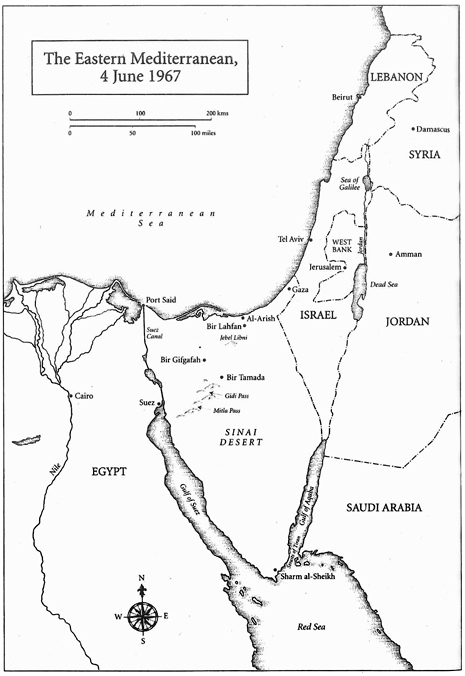
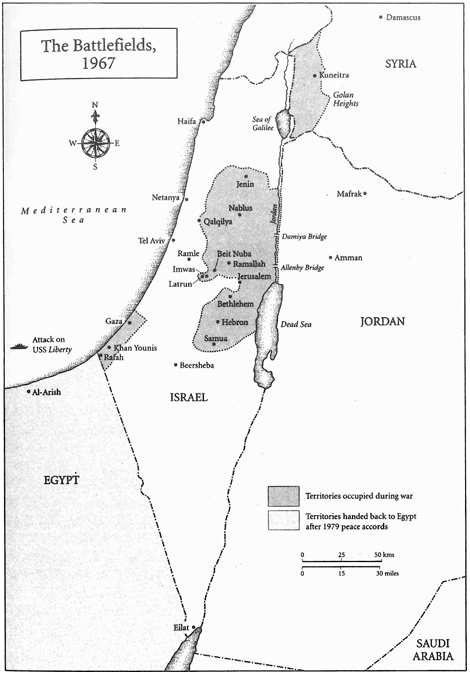
Introduction
Roads into war zones feel the same wherever you go. It is something to do with the way that tanks churn up tarmac and verges and flatten parked cars and buildings. When it is wet, mud gets everywhere. If it is dry, you breathe and eat dust. Normal civilian traffic is stripped away by war, and roads turn into something more alien and primitive. Weeds grow where people walked and talked and did their shopping. And there are always jumpy, armed men. The road into Jenin in 2002 had all of that. The Israeli soldiers on the checkpoint were aggressive and hostile. When I got out of my car to talk to one of them he pointed his gun and threatened to shoot me. I did not think he was joking. Lines of cars belonging to Palestinians were kept for hours in a queue that did not move. Armed Israelis who lived inside the West Bank on Jewish settlements raced by, unchecked.
In the end my press pass from the Israeli government worked and the soldiers let me cross into Jenin. They had just been into the town themselves, on a raid to destroy the house of a man they had assassinated the previous night. A refugee camp stands in the heart of Jenin. Or used to. Now there is a great wide space instead. Children in school uniforms were trudging across it. It used to be a poor, densely populated district. The Israelis flattened it with armoured bulldozers after they entered Jenin on 3 April 2002 in the biggest and most ambitious military operation, until then, against the Palestinian uprising. They were after Palestinian militants who they believed had been behind the deaths of more than seventy civilians in Israel in the previous month or so.
The biggest Palestinian attack in a bloody and frightening few weeks was on 27 March 2002. Two hundred and fifty guests were sitting down to their Passover dinner at the Park hotel in Netanya, a seaside town north of Tel Aviv. A man came in wearing a long-haired wig and a big black overcoat. He seemed to be going from table to table looking for his place. His name was Abdel-Basset Odeh and his last act was to detonate the bomb that he had strapped to his body. The explosion blasted back off the walls and ceiling. It killed 29 people and injured 140. Most of them were elderly, many were couples, some had come to Israel after their families were slaughtered by the Nazis in the Holocaust. The attack caused terrible shock and outrage in Israel, because it killed so many innocent people and because it desecrated one of the most important Jewish nights of the year. Passover is a religious festival, commemorating the exodus of Jews from Egypt in the days of Pharaoh, but it is also a night when families, even if they are not religious, try to be together, like Christians do at Christmas. The bomber came from the Palestinian town of Tulkarem, which is around ten miles east of Netanya, not too far from Jenin.
After the Netanya bomb it was clear that the Israeli government would carry out its threat to mount big punitive operations in the West Bank, parts of which had been administered by Palestinians since 1995. In the end they reoccupied it completely. When the Israeli army entered Jenin, Palestinian fighters were ready. They put up a hard fight. After they killed thirteen Israeli soldiers in an ambush on 9 April, the armoured bulldozers went to work. The Israelis said it was a military necessity, and that minimum force was used.
Unwisely and inaccurately, the Palestinian leader Yasser Arafat claimed there had been a massacre. An investigation by the widely respected American group Human Rights Watch found no evidence for the allegation. But they also found that Israeli soldiers had carried out serious violations of international humanitarian law, which if proved in court would be war crimes. According to Human Rights Watch, at least fifty-two Palestinians were killed. Twenty-seven or so were armed men who fought the Israelis. At least twenty-two were civilians, including children, the elderly and the physically disabled. One 37-year-old man, who was paralysed, was killed when the Israelis bulldozed his home on top of him. Human Rights Watch found that Kamal Tawalbi, the father of fourteen children, was kept with his fourteen-year-old son in the line of fire as human shields during a three-hour gun battle. Israeli soldiers used Tawalbi and his sons shoulders as rests for their rifles while they fired.
The conflict between Jews and Arabs started when the first Zionist settlements were established in Palestine more than a century ago. But it took on its current shape after the Middle East war of 1967, when Israel captured large swathes of Arab land, much of which it still holds. The Israeli government that prosecuted the war in 1967 said that it had no territorial ambitions, that it was fighting for security, not land. But since then hundreds of thousands of Israelis have been settled on the land that Israels forces seized. The occupation that started in 1967 has become the driving force behind the violence that Israelis and Palestinians are inflicting on each other. I wrote this book because during the years I lived in Jerusalem as the BBCs Middle East Correspondent I found that the best way to understand the conflict now is to understand 1967.
The dangers the war was creating were spotted very early on by President Lyndon Baines Johnson, one of the staunchest friends of Israel ever to occupy the White House. On the third day of the war, as Israel completed its capture of Jerusalem and the West Bank, he warned that by the time the Americans had finished with all the festering problems, they were going to wish the war had not happened. The wars legacy has now been festering for more than thirty-five years. Four days after the war ended, Johnsons Secretary of State, Dean Rusk, warned that if Israel held on to the West Bank, Palestinians would spend the rest of the twentieth century trying to get it back. At the beginning of the twenty-first, nothing has changed.
The Six-Day War swept up a generation of Israelis and Arabs whose children still cannot live peacefully in the world the war created. Israelis deserve peaceful, safe lives. Palestinians who were dispossessed and exiled if they became refugees, humiliated and abused if they stayed, deserve justice. Israels overwhelming victory turned into a curse. It has never been able to digest the land swallowed in 1967. It has poured money into colonising the Occupied Territories, defying international law and splitting its own people. Thirty-six years after the end of six days of fighting with Jordan, Egypt and Syria, after thousands more deaths and the failure of six years of negotiations, Israelis and Palestinians are fighting again over the future of the West Bank and Gaza. It is still a low-intensity war. But if another full-blown Middle East war breaks out, its roots will lie in those six days in 1967. The Middle East will have no peace until Israelis and Palestinians, as equal partners, settle the future of the land that was captured in 1967 and unwind the consequences of the war.


